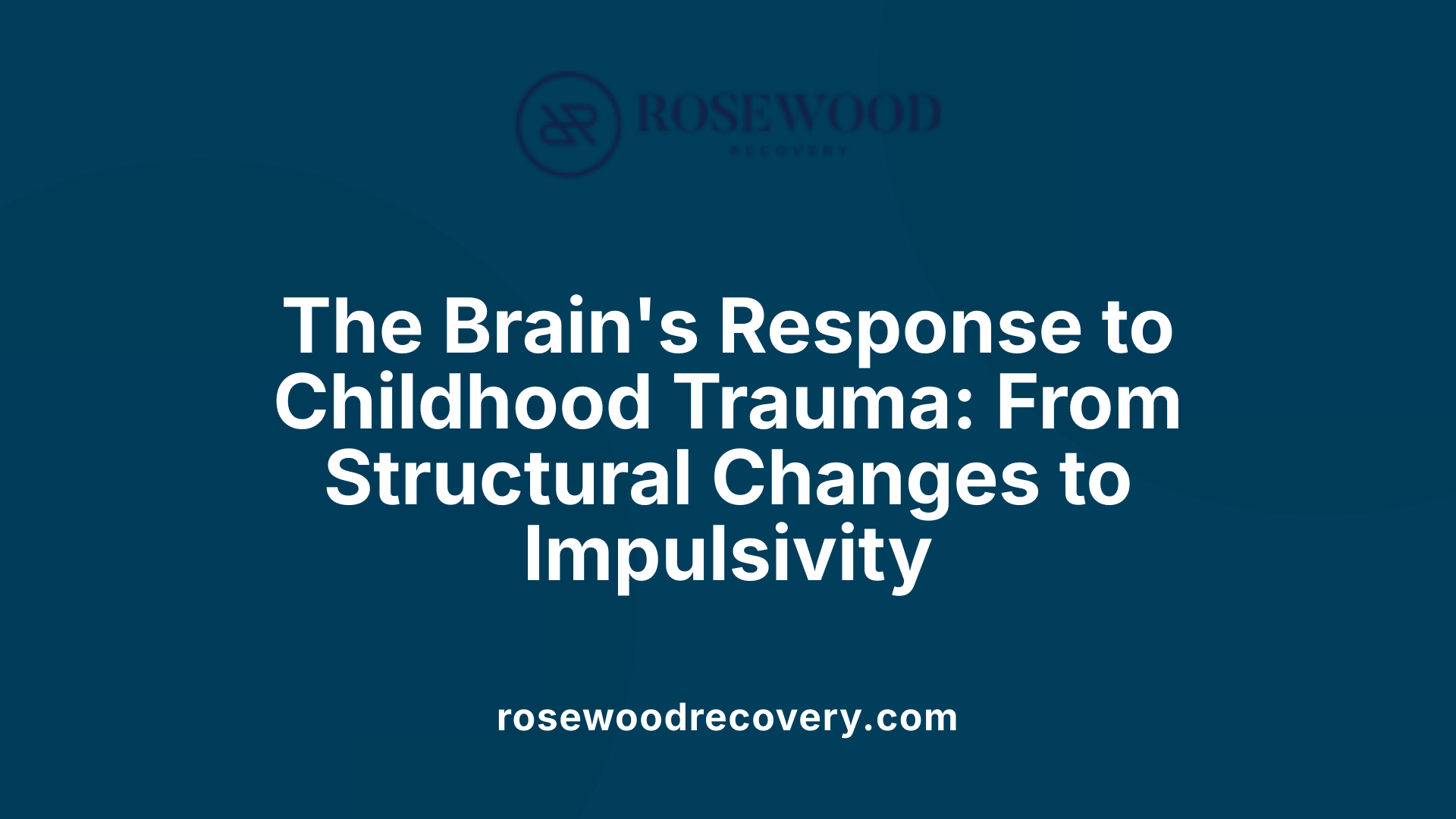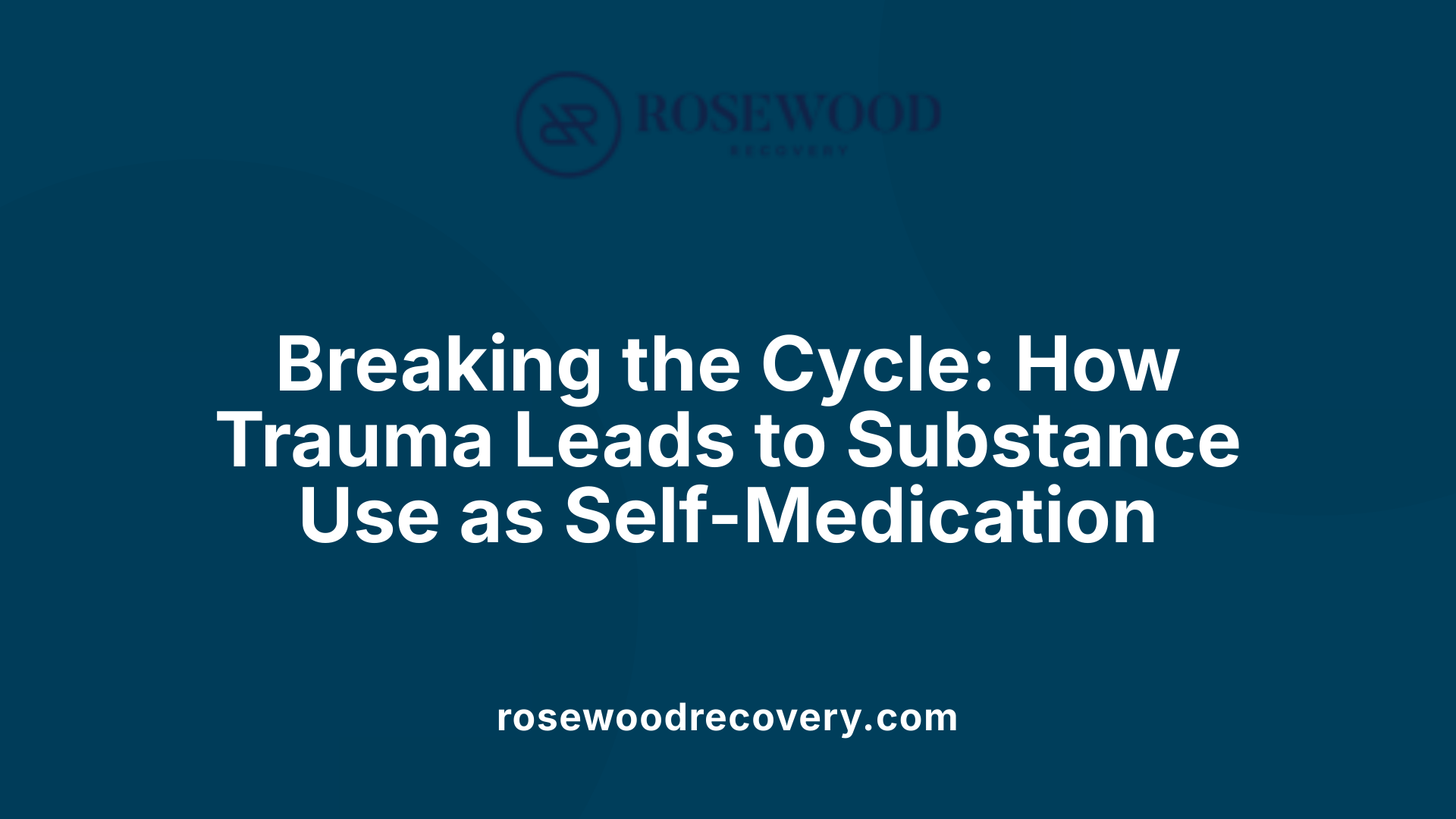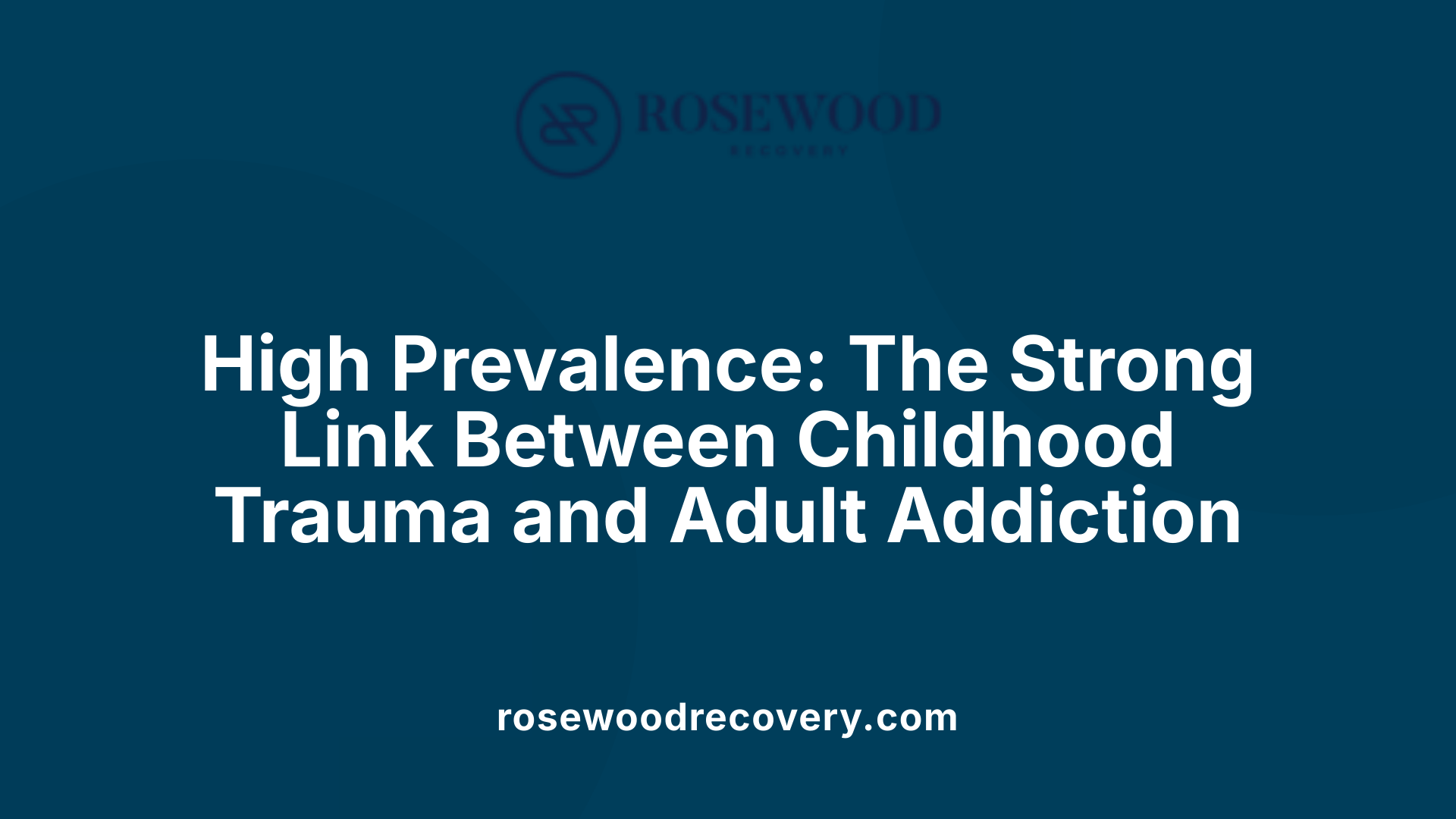Understanding the Roots of Addiction
Childhood trauma—comprising abuse, neglect, and exposure to violence—has profound, lasting effects on brain development and emotional regulation. Extensive research demonstrates a strong link between early adverse experiences and a heightened vulnerability to addiction in adulthood. This article explores how traumatic childhood events shape neural pathways, influence behavior, and increase the risk of substance dependence, emphasizing the importance of trauma-informed prevention and treatment strategies.
Neurobiological Impact of Childhood Trauma on Brain Development

How does childhood trauma increase the risk of addiction?
Childhood trauma significantly elevates the likelihood of developing addiction by inducing enduring changes in the brain's mechanisms responsible for managing stress, emotions, and impulses. Traumatic experiences such as physical, sexual, or emotional abuse can dysregulate the biological stress response system, particularly the hypothalamic-pituitary-adrenal (HPA) axis, resulting in heightened stress sensitivity and hyperarousal. This dysregulation often prompts individuals to seek substances as a form of self-medication to dampen these overwhelming feelings and alleviate PTSD symptoms.
Research demonstrates a strong correlation between early trauma and higher incidences of substance dependency, especially with drugs like cocaine, alcohol, and marijuana. Trauma-related alterations in neural circuits involving regions such as the amygdala, hippocampus, and prefrontal cortex impair fear extinction and emotional regulation. These structural and functional changes make it harder to control impulses and reduce fear and anxiety, thereby increasing vulnerability to both PTSD and addiction.
In sum, childhood trauma lays a neural foundation that predisposes individuals to maladaptive coping strategies—most notably, substance use—creating a cyclical relationship between trauma and addiction.
How does childhood trauma lead to addiction?
Trauma experienced during childhood can profoundly shape an individual's emotional landscape, often resulting in difficulties with emotion regulation and stress management. According to renowned psychiatrist Dr. Gabor Maté, traumatic experiences impede normal brain development, which in turn heightens the risk of addiction as a way to self-soothe and escape emotional pain. These children may turn to drugs or alcohol to temporarily numb distressing feelings or memories, fostering a cycle of dependency.
Trauma can also impair attachment and trust, leading individuals to feel isolated and less likely to seek or accept healthy support systems. Consequently, they may resort to substances or compulsive behaviors that provide immediate relief.
Recognizing how deeply trauma influences the brain underscores the importance of trauma-informed treatment approaches. Addressing the underlying trauma allows for healthier coping strategies and disrupts this cycle, ultimately aiding recovery.
What kinds of childhood trauma are most associated with addiction?
Various traumatic experiences in childhood are strongly linked to later addiction. These include physical, emotional, and sexual abuse; neglect; witnessing domestic violence; traumatic loss such as the death of a loved one; and household dysfunction like parental substance abuse or mental illness.
Dysfunctional caregiving and disrupted attachment during formative years often serve as the backbone for trauma that increases vulnerability to substance use. Studies have shown that traumatic conditions such as PTSD in adolescence highly elevate the risk for developing substance use disorders.
Trauma during childhood disrupts the normal development of stress regulation systems and emotional processing circuits, which can contribute to mental health issues such as depression and PTSD, further compounding the risk of addiction.
Addressing these initial trauma sources through trauma-informed, holistic therapies is essential for effective treatment and long-term recovery.
What percentage of individuals with addiction have experienced childhood trauma?
Research indicates that a substantial portion of people with substance use disorders (SUD) have experienced childhood trauma. Estimates suggest that around 75% of individuals with SUD have endured some form of traumatic experience during childhood.
Specifically, many studies report that nearly half or more of those struggling with addiction have a history of physical, emotional, or sexual abuse. For example, the Adverse Childhood Experiences (ACE) study highlights a graded relationship between the number of childhood adversities and the risk of substance abuse—each additional ACE more than doubling or tripling the likelihood.
This high prevalence underscores the importance of incorporating trauma assessment and trauma-informed care into addiction treatment programs. By addressing underlying trauma, treatments become more effective, reducing relapse rates and supporting healthier recovery pathways.
| Aspect | Details | Additional Insights |
|---|---|---|
| Prevalence | About 75% of SUD patients report childhood trauma | Trauma history is common in addiction populations |
| Common traumas | Abuse, neglect, household dysfunction | Types influence specific substance use patterns |
| Impact | Trauma during childhood increases the risk of addiction | Disrupts brain development and stress regulation |
| Treatment | Trauma-informed approaches are crucial | Integrated care improves outcomes |
This data emphasizes that addressing childhood trauma is essential for effective prevention and treatment of addiction, highlighting how deeply trauma impacts neurodevelopmental pathways leading to substance dependence.
Trauma's Effects on Brain Structures and Functions
Structural changes in limbic system (amygdala, hippocampus)
Childhood trauma can cause notable alterations in brain structures responsible for emotion and memory. The amygdala, which processes fear and threat detection, often becomes hyperactive due to traumatic experiences, increasing reactivity to stress and perceived danger. Meanwhile, the hippocampus, vital for memory formation and learning, tends to be smaller—about 12% on the left side in individuals who experienced childhood abuse— impairing their ability to process memories and regulate emotions effectively.
These structural modifications can lead to emotional dysregulation, difficulties in forming healthy attachments, and an increased tendency towards anxiety and depression, all of which are linked to a higher risk of addiction as survivors seek relief from emotional distress.
Dysregulation of the HPA axis and stress response
Childhood trauma also impacts the body's primary stress regulation system, the hypothalamic-pituitary-adrenal (HPA) axis. When a traumatic event occurs, this system activates to prepare the body for fight-or-flight, releasing stress hormones like cortisol and adrenaline.
Repeated or chronic trauma can lead to the HPA axis becoming dysregulated, causing persistent elevation of stress hormones. This hyperarousal state results in heightened anxiety, difficulty in calming down, and problems with stress management. Over time, these alterations increase vulnerability to mental health issues, including PTSD, depression, and substance use disorders, as individuals often turn to drugs or alcohol to soothe their overactive stress responses.
Neurotransmitter imbalances linked to trauma
Trauma also affects the brain's neurotransmitter systems, particularly dopamine and serotonin, which regulate mood, reward, and emotional stability. Childhood trauma can cause reductions in dopamine and serotonin levels, leading to feelings of anhedonia and depression.
Furthermore, trauma-induced increases in stress hormones like cortisol can further disrupt neurotransmitter balance, impairing the brain's ability to experience pleasure and motivation. These neurochemical changes create a biological basis for the development of addiction, as individuals may seek substances that temporarily restore these neurotransmitter levels and alleviate trauma-related distress.
The Cycle of Trauma and Substance Use as Coping Mechanisms

How does the self-medication hypothesis explain the link between childhood trauma and addiction?
The self-medication hypothesis suggests that individuals who experience childhood trauma often turn to alcohol or drugs as a way to alleviate residual psychological pain, anxiety, or depression. These substances provide temporary relief from negative emotions, creating a cycle where substance use becomes a primary method for managing trauma-related symptoms.
How does modeling behavior from family and environment influence substance use?
Children often learn behaviors by observing their family members. Witnessing parents or caregivers engaging in substance use can model these behaviors as acceptable or effective coping mechanisms. This learned behavior increases the likelihood that individuals will adopt similar substance use patterns later in life, especially if the environment is characterized by household dysfunction or ongoing trauma.
Why do individuals use substances to escape negative emotional states?
Trauma in childhood can disrupt normal emotional regulation, leading to heightened feelings of fear, anxiety, or shame. Substances can provide an escape from these intense emotional states by dulling distress or creating feelings of euphoria. Over time, this avoidance strategy can develop into a dependence, making it difficult to face emotions without substance use.
| Aspect | Explanation | Impact on Addiction Risk |
|---|---|---|
| Self-Medication | Using substances to cope with trauma symptoms | Increased likelihood of developing addiction |
| Modeling Behavior | Learning substance use from family environment | Higher chance of adopting similar behaviors |
| Emotional Escape | Using drugs or alcohol to avoid negative feelings | Reinforces dependency and compulsive use |
Understanding these mechanisms highlights how childhood trauma can set the stage for maladaptive coping strategies that persist into adulthood, increasing vulnerability to addiction.
Prevalence and Statistical Evidence Linking Childhood Trauma to Addiction

What percentage of individuals with addiction have experienced childhood trauma?
Research shows that a significant majority of those with substance use disorder (SUD) have a history of trauma. Approximately 75% of individuals with SUD report experiencing some form of traumatic event at some stage in their lives. When focusing on childhood trauma specifically—such as physical, emotional, or sexual abuse—the figures become even more striking.
Estimates suggest that around half or more of people with addiction have endured traumatic experiences during childhood. This connection is well-documented through studies like the Adverse Childhood Experiences (ACE) study, which highlights how early trauma is directly linked to an increased likelihood of developing SUD later in life.
Many individuals turn to substances as a way to self-medicate unresolved trauma. This behavior can start as a coping mechanism for managing pain, fear, or shame rooted in childhood abuse or neglect. The strong correlation between childhood trauma and adult addiction underscores the importance of trauma-informed approaches to treatment.
Understanding this link can help medical professionals and caregivers develop more effective support systems that address both trauma recovery and substance misuse. Ultimately, the evidence points to childhood trauma being a common and influential factor among those battling addiction.
Impacts of Trauma on Mental Health and Behavioral Patterns
PTSD and co-occurring disorders
Childhood trauma significantly increases the risk of developing mental health issues such as Post-Traumatic Stress Disorder (PTSD). Many survivors of childhood abuse or neglect experience persistent symptoms like flashbacks, hyperarousal, and avoidance, which can severely impair daily functioning. Often, trauma goes hand-in-hand with substance use disorders, creating co-occurring conditions that complicate treatment. Around 75% of individuals with substance addiction have experienced some form of trauma, highlighting the strong link between early adverse experiences and adult mental health challenges.
Negative self-image and self-talk
A common psychological consequence of childhood trauma is the development of a negative self-image. Many survivors grapple with feelings of shame, guilt, and worthlessness, which manifest as negative self-talk. These internalized beliefs can perpetuate a cycle of emotional pain, leading individuals to seek relief through substances. Negative self-perceptions also hinder recovery, as they diminish self-esteem and motivation, making it harder to pursue and sustain positive change.
Impulsivity and risk-taking behaviors
Trauma during childhood alters the brain’s development, particularly in areas involved in impulse control and decision-making. As a result, survivors often exhibit impulsivity and engage in risk-taking behaviors such as substance experimentation, unsafe sex, or reckless driving. These behaviors may serve as coping mechanisms to temporarily numb emotional distress or gain a sense of control. Unfortunately, such patterns can escalate into addiction, especially as individuals struggle to manage unresolved trauma-related feelings.
| Aspect | Effect | Explanation |
|---|---|---|
| PTSD | Persistent trauma symptoms | Hyperarousal, flashbacks often co-occur with addiction |
| Self-image | Negative perception of self | Leads to self-destructive behaviors and low self-esteem |
| Risk-taking | Engagement in hazardous behaviors | Functions as avoidance or thrill-seeking driven by trauma |
Treatment Approaches and Prevention Strategies
Why are trauma-informed care models important?
Trauma-informed care models recognize the deep link between childhood trauma and adult addiction. These approaches create a safe environment where individuals feel supported in exploring their trauma without judgment. They focus on understanding how trauma affects brain development and behavior, guiding treatment to address both the emotional wounds and addictive behaviors.
What therapies like CBT, EMDR, and DBT are used?
Various therapies are effective in treating trauma and addiction. Cognitive Behavioral Therapy (CBT) helps individuals identify and change harmful thought patterns and behaviors. Eye Movement Desensitization and Reprocessing (EMDR) enables clients to process traumatic memories safely. Dialectical Behavior Therapy (DBT) teaches emotion regulation and distress tolerance skills, vital for healing from trauma. These therapies are often combined for comprehensive treatment.
Why is integrated treatment crucial?
Effective recovery often requires addressing both trauma and addiction simultaneously. Integrated treatment programs consider the intertwined nature of these issues, providing therapy tailored to mental health, substance use, and trauma recovery. This holistic approach improves long-term outcomes and reduces the risk of relapse.
How does early intervention help?
Early identification and intervention for childhood trauma can prevent the progression to substance use disorders. Schools, healthcare providers, and community programs play vital roles in early screening and support. Preventive measures include building resilient environments, strengthening family support, and offering trauma-informed education, which can break the cycle of trauma and addiction.
Breaking the Cycle: Addressing Childhood Trauma in Addiction Treatment
Understanding the profound impact of childhood trauma on adult addiction underscores the importance of trauma-informed care and early intervention. Recognizing the neurobiological and psychological pathways linking adverse childhood experiences to substance dependence can lead to more effective treatment strategies. Holistic approaches that address underlying trauma not only improve recovery outcomes but also prevent the cycle of addiction from perpetuating through generations. As research advances, integrating trauma-informed practices into prevention and therapeutic programs remains essential for fostering resilience and healing in individuals affected by early adversity.
References
- The Connection Between Childhood Trauma Adult Addiction
- National Helpline for Mental Health, Drug, Alcohol Issues | SAMHSA
- The Link Between Childhood Trauma and Addiction
- Substance use, childhood traumatic experience, and Posttraumatic ...
- The intersection of childhood trauma and addiction
- The association between type of trauma, level of exposure and ...
- Addressing The Link Between Trauma And Addiction

.jpeg)


